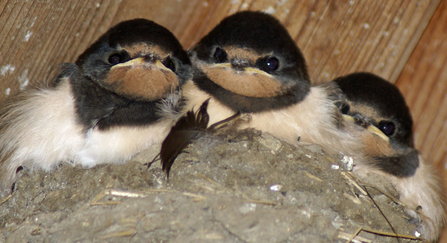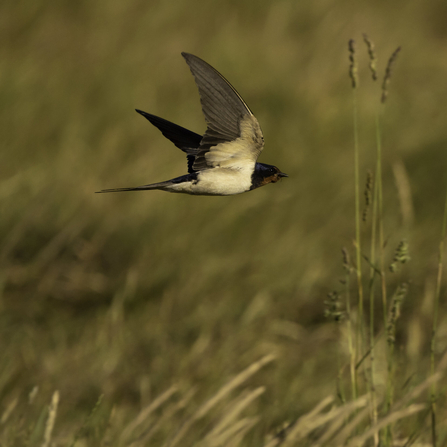Swallows (also known as barn swallows) are summer migrants to the UK, usually arriving from early April onwards after flying 6,000 miles from Africa. I’m always amazed how birds that weigh no more than 25 grams can make such epic journeys, feeding on the wing to maintain their energy.
Swallows are graceful aerial acrobats which helps them secure an ample supply of flying insects. Watching their precision as the birds skim across the top of open water to drink is a real thrill. I often wonder how they don’t end up splashing down.
Swallow spotting
Swallows can be found across most of the UK. In flight, they can be confused with similar species, such as martins and swifts. I find it useful to look for the long, forked tail and longer wings, and to listen for the chattering trilling sound.
If you’re fortunate to spot a swallow at rest, its markings are quite distinctive with a dark blue-black head and wings, red face, and cream chest.




